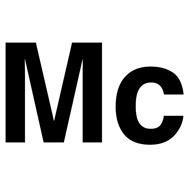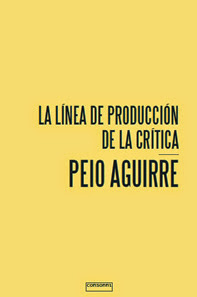Hi, I received this from Felix, the Dutch version of the text is allready circulating in the Netherlands with quite a lot of response. Everyone can participate and suggest ideas for The Public Club.
The Public Club
This statement is a starting point and invitation to The Public Club; an agency of independent writers, designers, artists preoccupied with, and working in the public domain. It is in our wish to come to an agency that addresses the individual approaches and brings them to another level of recognition. In fact, the Public Club should not have a logo but a communal signature.
The form and structure of this network of connected practices, the agency-without-an–office is subject to discussion.
In recent years public services have developed into a market-player. Public services such as the media, energy, health care, social welfare and cultural institutions have become increasingly detached from the ideal of the common good, and the policies relating to the various spheres of public life are no longer oriented towards their original reason for being. They have become increasingly concerned with the ideals of the market –characterized by a growing obsession with a return-on-investment, and efficiency.
In this new context, whereby strategies from the market are being put into place within the public domain, citizens become consumers – they are addressed as consumers and increasingly respond as consumers.
Collective memory, the sharing of history and place, and all others characteristics of a well functioning society, seem now to be out of step with the mission statements of these Quangos and other executives of the public domain.
This development is not incidental, it can be explained historically. Before accepting such conditions as irreversible we must take time to consider a possible counter-strategy. Designers, intellectuals and artists are concerned with, and produce work within, culture. Cultural practice is an instrument that allows us to make fundamental encounters that enables us to think beyond reality (reality is always a slippery thing to define, but, for now we will define it as what we know or what is being conceived as possible).
The neo-liberal concept of the split market-culture can't continue, one should choose between the parallel worlds of the public and corporate sphere. Not that they exclude each other or have to be conquered and challenged, but just that they are different. We choose culture. The Public Club is its agency.
The field in which the Public Club operates is the public domain; the place where beauty and friction meet, where a balance between the individual and the collective exists. Ideally it is the domain where we share, meet or collectively produce without instrumentalization or profit. This makes it, by definition, a temporary situation and a collective condition – a product of collective interaction. The question is not "where" or "what” the Public domain is, but rather, "when".
During the 20th century public services were falsely identified with the public domain. As if the state set and maintained the preconditions for the public domain. The public club challenges this.
The public domain is international
It's an illusion to think that Globalization or EU-zation still have to come because they are already here, which means the public domain is already supra urban and supra national - whether it’s about the free movement of people, labor or culture.
Also in the cultural field the desire to organize culture nationally leads to unreal
competitive positions. One can see this schizophrenia in the different biennales where the situation of nationally organized pavilions and international curators, artists, designers or architects is kept in place. Here culture becomes the cue ball of competitive culture-politics – the branding of a city, the branding of a nation.
The longing for a national identity does not finds its solution in the nostalgia of ‘national heritage’. The answer to the question of who we are can only be answered by sharing
culture publicly and not by positioning ourselves as Dutch, French or German – which will only ever define us through our difference to each other. The borders of the public domain aren't geographical, they are semantic and temporary.
The public domain is underground
Commercial and institutional parties dominate society and the true public domain is increasingly marginal in relation to them. Accepting this reality creates new possibilities: freed from its pragmatic function (the safety-net of public utility is transferred to the level of insurance) it can become a subversive domain: different, alternative and contradictory. The public domain is not the space to be designed or aesthetisized, but the playground wherein the untimely differences within the institutionalized worlds become visible and exchangeable.
Some design offices claim to "do" public space, but the paradox is that the public-ness of public space decreases as the design of it increases.
The public domain is experimental
Most of the tasks that belong to the public services - as guardians of the public domain – are now being organized by or through the market or through the offices of quangos. The Public Club considers the public domain to be the R&D department of our society, the breeding ground for new ideas and alternatives. Freed from the logic of performance, bureaucracy or direct implementation, it can experiment with new forms of collectivity in
areas as various as the media, energy, health care, social welfare and cultural institutions &c. These experimental models should not be mistaken for the "innovation" rhetoric that the knights of the creative industry proclaim – it represents another way of thinking, its goals are not to be the fuel or grease of corporate culture but to create alternative realms.
Freed from the implementation models things can be allowed to develop that can’t be developed elsewhere. With such models we can share and participate on the basis of curiosity and concern and need no longer be ruled by a profit motive imposed upon them.
11/27/2006
11/20/2006
CORK CAUCUS and D.A.E.


Hi, this is the info of a book launch where Leire Vergara and I (as individuals related with D.A.E.) contributed with some toughts and reflections. Cork Caucus took place in the summer of 2005 in Cork (Ireland) and we were there presenting our work and also representing Donostia-San Sebastian. We had fun and also quite a lot of exchange. (Info Below)
----------------------------------------
25th November
The National Sculpture Factory is delighted to invite you to the launch and celebration party for the new publication:
Cork Caucus: on art, possibility & democracy
Cork Caucus: on art, possibility and democracy, is a 500+ pages book containing newly commissioned critical and theoretical essays on thematic and dialogical issues emerging from the NSF project/event Cork Caucus (as part of Cork 2005) as well as representing the discussions, presentations, commissions and events that took place as part of the event itself through edited transcriptions and full-colour visual essays.
As well as contributing to practice-based and academic studies on contemporary art, it is a unique addition to new thinking about contemporary art and culture, in particular as it relates to democracy and political thinking.
Contributors to the publication include:
Gayatri Chakravorty Spivak and Chantal Mouffe (keynote lectures and post-lecture discussions)
Catherine David, Vito Acconci, Lukas Einsele, WHW, Phil Collins, Jan Verwoert, Shane Cullen, Eamonn McCann, Haegue Yang, Gerald Raunig, Sarah Pierce, D.A.E. (Peio Aguirre and Leire Vergara), James Elkins, finger, Jeremiah Day, Keri Jones, Cemeti Art Foundation and Kunci Cultural Studies Centre, Fergal Gaynor, Simon Sheikh and Ashley Hunt, Bik van der Pol, Surasi Kusolwong, Sarat Maharaj, Maria Eichhorn, and more.
Editors: Trevor Joyce and Shepherd Steiner
Visual Editors: Dobz O'Brien and Can Altay
Publishers: Revolver
Commissioners: National Sculpture Factory
"Our approach has been, through words and images, not merely to record the significance of the event, but to attempt to convey a sense of its variousness, complexity, and aesthetic and intellectual range."
- quote from editors Trevor Joyce and Shep Steiner
Suscribirse a:
Entradas (Atom)







